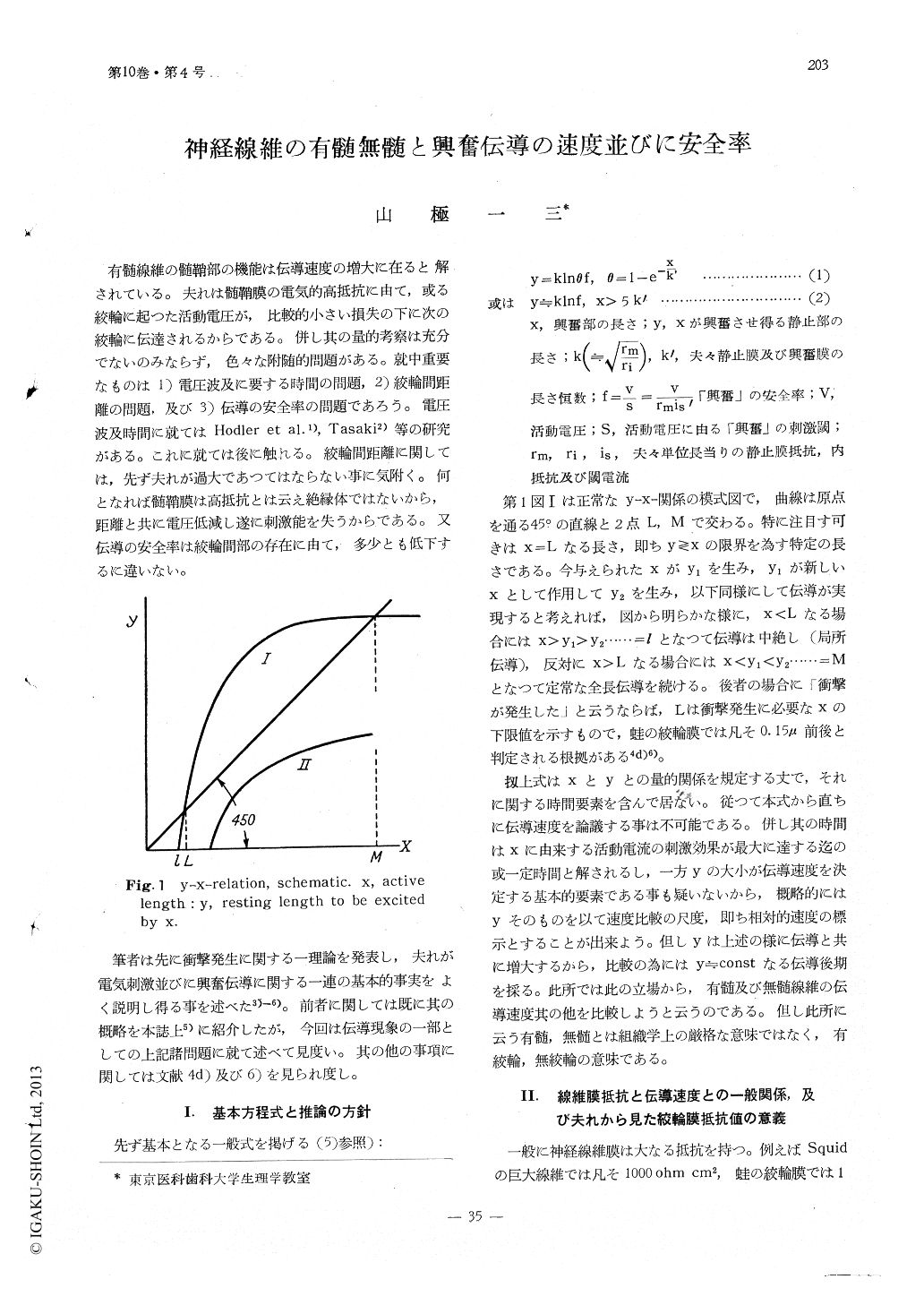Japanese
English
- 有料閲覧
- Abstract 文献概要
- 1ページ目 Look Inside
有髄線維の髄鞘部の機能は伝導速度の増大に在ると解されている。夫れは髄鞘膜の電気的高抵抗に由て,或る絞輪に起つた活動電圧が,比較的小さい損失の下に次の絞輪に伝達されるからである。併し其の量的考察は充分でないのみならず,色々な附随的問題がある。就中重要なものは1)電圧波及に要する時間の問題,2)絞輪間距離の問題,及び3)伝導の安全率の問題であろう。電圧波及時間に就てはHodler et al.1),Tasaki2)等の研究がある。これに就ては後に触れる。絞輪間距離に関しては,先ず夫れが過大であつてはならない事に気附く。何となれば髄鞘膜は高抵抗とは云え絶縁体ではないから,距離と共に電圧低減し遂に刺激能を失うからである。又伝導の安全率は絞輪間部の存在に由て,多少とも低下するに違いない。
筆者は先に衝撃発生に関する一理論を発表し,夫れが電気刺激並びに興奮伝導に関する一連の基本的事実をよく説明し得る事を述べた3)-6)。前者に関しては既に其の概略を本誌上5)に紹介したが,今回は伝導現象の一部としての上記諸問題に就て述べて見度い。其の他の事項に関しては文献4d)及び6)を見られ度し。
Based on the author's theory of initiation of impulse, examinations were made on the conduction velocity and safety factor of myelinated and unmyelinated nerve fibres. Chief results obtained are: 1) the velocity v of an unmyelinated fibre is a function of the membrane resistance γm and attains maximum at a certain γm which makes f (safety factor of exitation)=e2)≒8; 2) v is small but F (safety factor of conduction)≒f in unmyelinated, while v is large but F<f in myelinated fibres. In other words, v is enhanced and F is reduced, if an unmyelinated fibre is myelinated; and 3) v of a myelinated fibre attains maximum at a certain internodal distance.

Copyright © 1959, THE ICHIRO KANEHARA FOUNDATION. All rights reserved.


